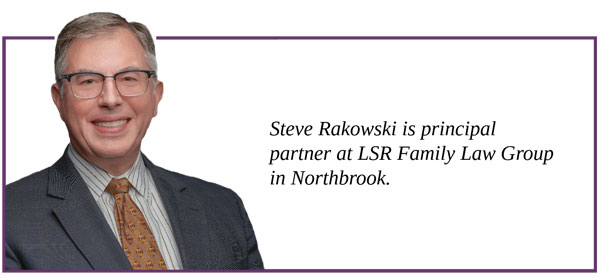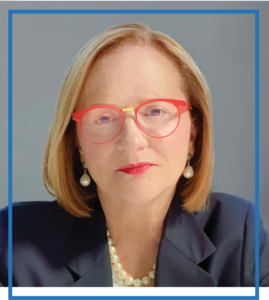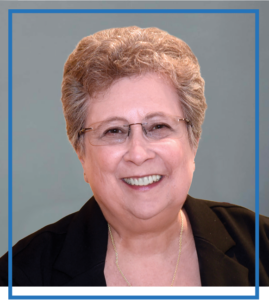Language, Language! In Family Law, It Can Make the Case
Illinois Fellow
American Academy of Matrimonial Lawyers
August 2022

Walking the walk is one thing. But can you talk the talk?
Attorneys, who serve ethnic communities, soon learn a vital lesson: their clients, when choosing a lawyer, prioritize language. Specifically, they want a lawyer who can communicate in the client's native tongue. This question takes precedent over a C.V. listing years of experience, multiple law-journal articles or even five-star Google ratings.
The most important question for anyone seeking legal advice is if an attorney can fully convey the nuances of the law—especially in domestic cases, where emotions run high—and then provide clear advice on next steps. When the client and attorney literally speak different languages, the process gets significantly more complicated. This is especially true when parents enlist their children—who may be directly impacted by the case—as translators.
This goes beyond the words alone. Language is the threshold to culture, and culture encompasses deeply ingrained ways of thinking. A client's culture may foster an outlook different from that of an opposing lawyer, or even from that of the judge. That's when the attorney must find a way to translate not only the words, but also the concepts on which the case rests.
I am Polish—fifth generation. Yet despite 32 years in practice, I still do not understand the thought processes of my first- and second-generation Polish clients. My family lost the language in the 1950s, when the anti-communism campaign conducted by Sen. Eugene McCarthy led my grandparents to ban the speaking of Polish both in and outside the house. As proud Americans, they wanted to assimilate fully, and also wanted to ensure that their kids got a fair shake when applying for schools and jobs.
But assimilation is no longer the goal of every immigrant. Ethnic communities now maintain their native culture. They buy goods and services from those who speak the same language, usually because it facilitates trust. Because I cannot talk to my Polish clients in the language they find most comfortable, I do not presume to know exactly what or how they may think, even though we share the same ethnicity.
For example, I have one Polish client who speaks passable English but prefers Polish, and when we discuss her case, we always end up quarreling. Her responses and questions convey a mistrust I cannot assuage; the harder I try to reason with her, the more arduous our conversations become. In frustration, I asked my Polish-fluent paralegal—my wife, Joanna Zagozdon—to handle these communications. This simple change elicited a remarkable change in the client's demeanor, from suspicious to cooperative—even grateful. I collaborated closely with Joanna and directed the messaging, so I know this transformation went beyond the choice of words.
I have seen a similar dynamic at play in court, when non-English-speaking pro se litigants use interpreters to translate exchanges between the judge and both attorneys. Such third-person communication, taking place in the crucible of a court appearance, is not conducive to making informed decisions, no matter what the interpreter's level of legal knowledge. In my experience, the lack of cultural understanding in the courtroom can lead to acrimony and defiance.
Miscommunication is all but guaranteed if an attorney does not speak the client's native language. The best solution? Always have someone on staff who is fluent in clients' language—Polish, in the case of my practice. A native speaker with legal experience can put the client at ease, while clarifying the sensitive details of family law and, of course, maintaining confidentiality.
As a second option, in the absence of a bilingual staffer, use a client's family member or friend as a go-between. This arrangement entails reminding the client of the confidentiality challenges posed by third parties. The downside? Family members may be so emotionally invested in a divorce or custody case that, in translation, they inadvertently corrupt legal advice, through inflection or adlibbed commentary.
Some might see the use of free online translation apps as a third option. But this is really no option at all, given the contextual nuances of the law as it applies to each case. You get what you pay for.
Beyond its cultural implications, language also influences perception, to a degree best explained by neuroscientists who have identified a critical link between language and emotion. Such research posits that the use of “emotion words” to label facial expressions may help concretize otherwise ambiguous facial expressions. Other neuroimaging studies show that brain regions involved in perception and experience also become active when one weighs semantic judgments. This evidence helps explain why language, rather than merely describing emotions, may play an integral role in shaping that emotion in the first place.
vAnd in our business, emotion is prevalent. As divorce attorneys we strive to separate ourselves from a client's emotions. But most clients see the situation differently. They relish their emotion; it is their currency. In such instances, our ability to relate directly to that mind-set may determine whether the client retains an attorney at all, and then how the case will proceed.Its well worth the time and energy needed to see things from the client's perspective: it often leads to a better relationship with a more appreciative client who can better navigate the pitfalls of the case. And besides, we all could use a few more five-star Google ratings.
Steve Rakowski gratefully acknowledges the patient guidance of Polish attorney Joanna Zagozdon in developing the content of this article.

Reach him at steve@lsrfamilylaw.com or at 847-412-9950

 Why did you apply to become a Fellow of the AAML?
Why did you apply to become a Fellow of the AAML?











 What do you find most rewarding about being an AAML Fellow?
What do you find most rewarding about being an AAML Fellow?

 Why did you apply to become a Fellow of the AAML?
Why did you apply to become a Fellow of the AAML? Why did you apply to become a Fellow of the AAML?
Why did you apply to become a Fellow of the AAML? Why did you apply to become a Fellow of the AAML?
Why did you apply to become a Fellow of the AAML? What do you find rewarding about being a Fellow of the AAML?
What do you find rewarding about being a Fellow of the AAML? What area of family law do you find most interesting?
What area of family law do you find most interesting?
 What are you most looking forward to in the following year, personally and or professionally?
What are you most looking forward to in the following year, personally and or professionally? What do you find most rewarding about family law?
What do you find most rewarding about family law? What do you find rewarding about being a Fellow of the AAML?
What do you find rewarding about being a Fellow of the AAML? What do you find rewarding about being a Fellow of the AAML?
What do you find rewarding about being a Fellow of the AAML? Why did you apply to become a Fellow of the AAML?
Why did you apply to become a Fellow of the AAML?